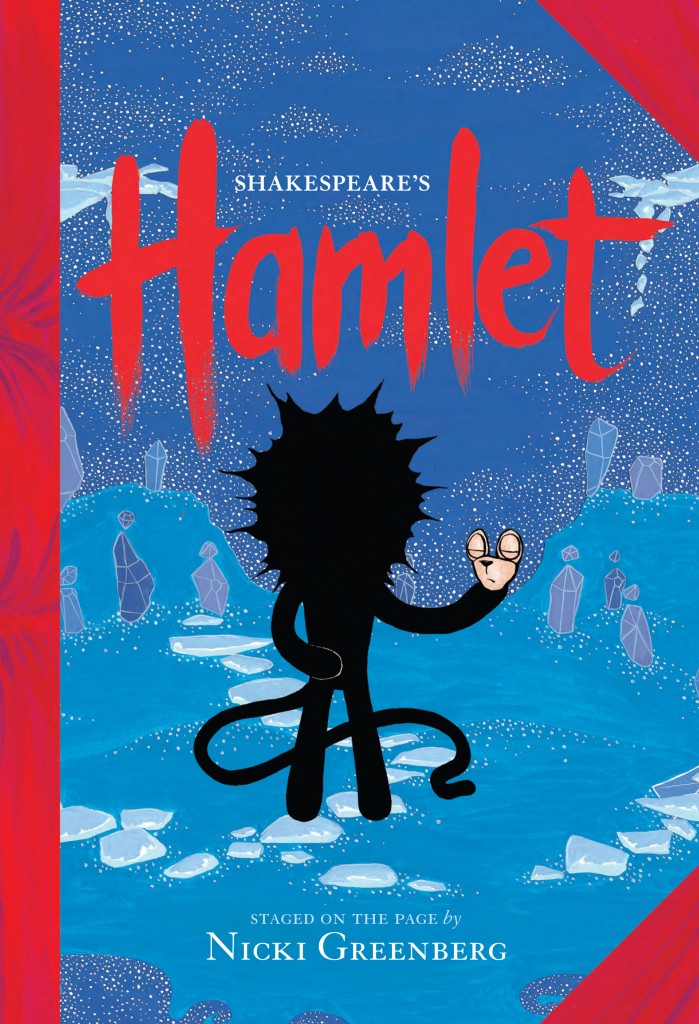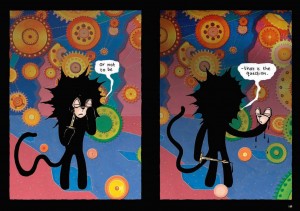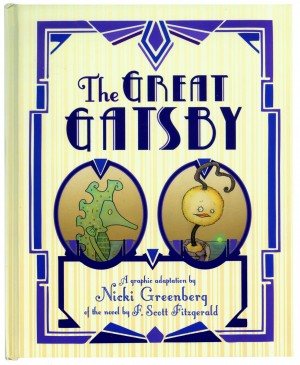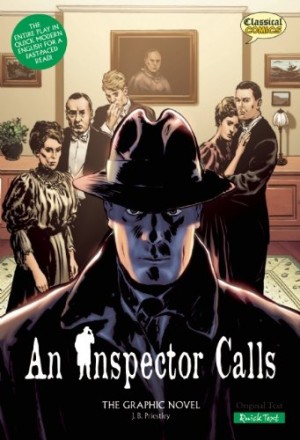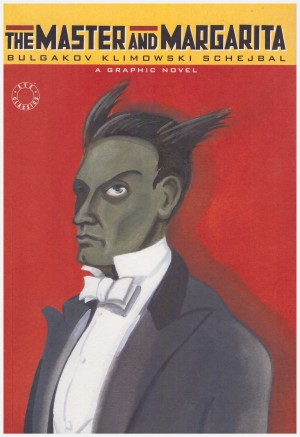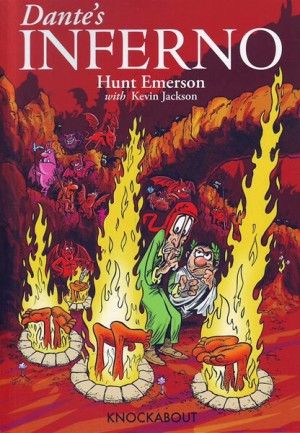Review by Cefn Ridout
When it comes to Shakespeare, little is sacred. And there can be few plays in the English language that have been as routinely re-interpreted as Hamlet. To these efforts we can add Nicki Greenberg’s daring and often dazzling take on this standard bearer of high Shakespearean tragedy.
A cartoonist who enjoys radically reconstituting literary classics (see The Great Gatsby), with Hamlet, Greenberg unleashes her narrative ambitions onto a sprawling, stylised canvas bristling with imaginative brio. Moreover, she makes the work her own while honouring the source material, creating a sad, striking and richly layered adaptation.
On stage or the page and at a distance of 400 years, it takes a while to tune into Shakespeare’s venerated verse. It doesn’t help that his plays conjure up dimly recalled school essays or, even worse, that they are somehow “good for you”. Recognising these challenges, Greenberg reimagines the players, staging and action to enliven and illuminate the drama and rhetoric. It’s a high-wire act that largely pays off.
And so Hamlet strides the stage as a charismatic, agile and conflicted inkblot tormented by his father’s murder, his mother’s infidelity, his uncle’s treachery and his own conscience. The rest of the cast are similarly draped in ink and wear their personalities on their feral features. Where the late King Hamlet prowls between the panels as a vengeful, leonine ghost, his widow Gertrude is a sensual shrew, redeemed by strong maternal instincts yet easily deceived by the conniving, mole-like Claudius. The long-suffering Ophelia emerges as a fragile squirrel-like creature wrestling with her own passions and the insistent demands of others, while her father, Polonious, tears up the page as an unctuous, wizened imp dispensing sense and nonsense in equal measure.
While this approach accentuates the play’s constructed reality, literally ink on the page, it also enables Greenberg to reveal the characters’ tensile temperaments as they morph, meld and dissolve according to their humours. This is especially so with Hamlet and Ophelia, who shred and reform in the throes of grief and madness, and with the prince’s cyclopean, conjoined comrades Rosencrantz and Guildenstern, whom he mischievously teases and rips apart.
Greenberg extends this playful experimentation to the narrative and illustrative style of the pages themselves, which take their cue from, and circumvent, the form and language of the theatre, cleverly adjusting for the comic medium’s lack of sound and physical movement.
Capitalising on the book’s outsized dimensions, Greenberg has painstakingly created surreal, symbolic sets to underscore the meaning of key scenes. Clock gears cluster and distort to signify that time is out of joint, viral patterns spread wildly in the presence of Claudius, confirming that something is rotten in Denmark under his malign influence, and a rank, unweeded garden preys upon and ultimately entraps Ophelia.
It’s typical of the smart visual devices deployed to tackle one of the play’s central themes – the porous boundary between performance and reality, deception and self-deception. This is ably demonstrated in the use of masks for the riveting “to be or not to be” and “get thee to a nunnery” scenes, and in the silent, parallel drama being played out backstage that acts as a tragic counterpoint to the main play.
For all the innovation, Greenberg occasionally stumbles over her own ingenuity. The visual symbolism is overplayed somewhat, with the background sets threatening to overwhelm the proceedings, while her heavy reliance on dramatic physical gesture often slides into the graphic novel equivalent of overacting. But for the most part, Greenberg brings a spirited and rigourous intelligence to her version of Hamlet, which will delight readers, educators and librarians alike.
